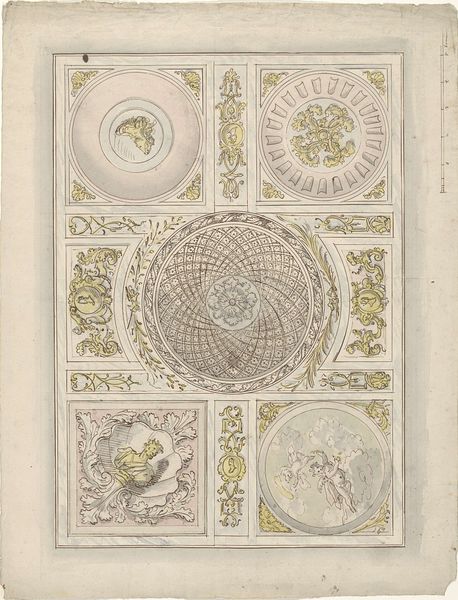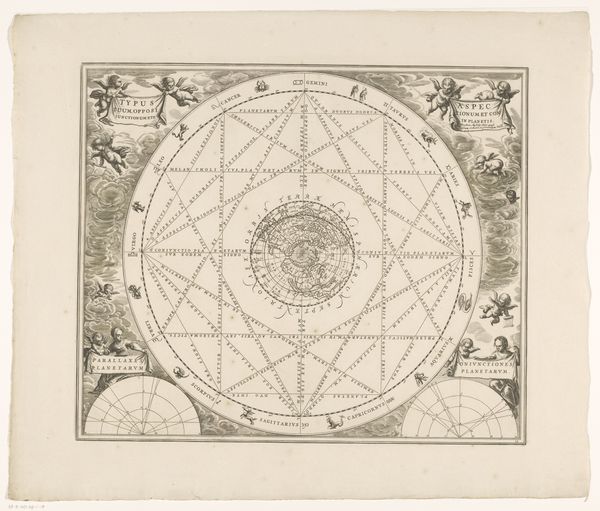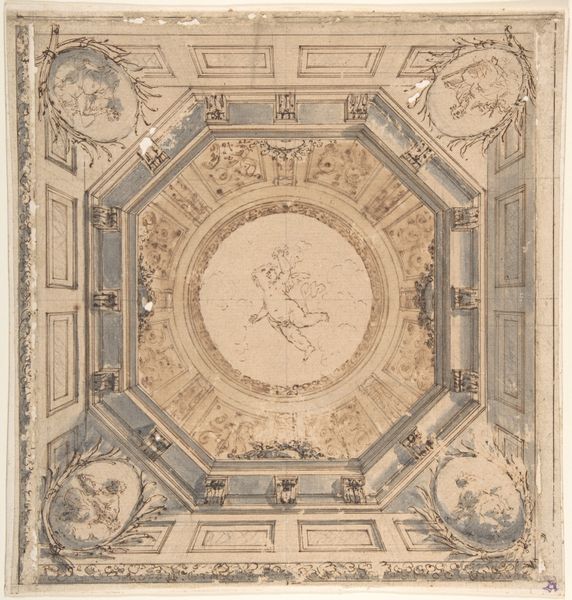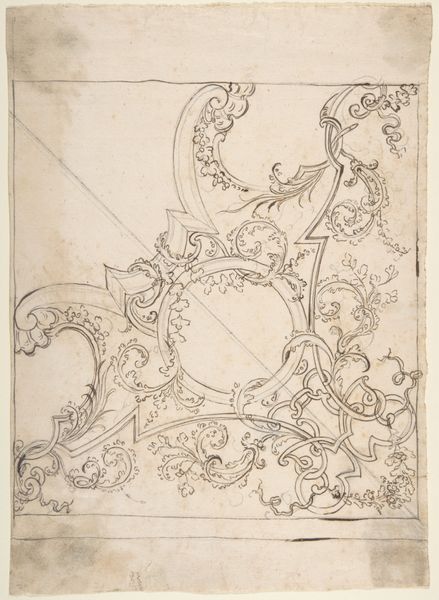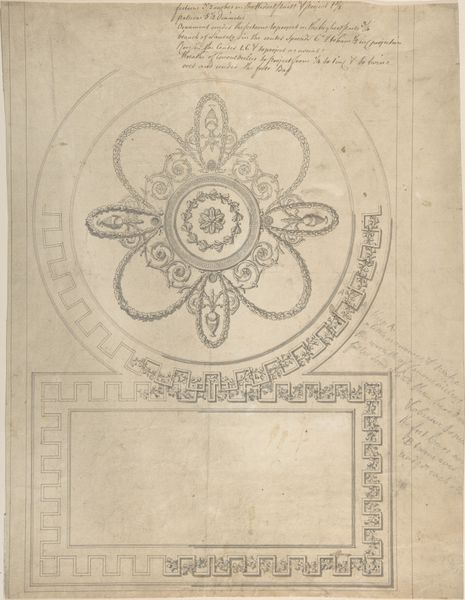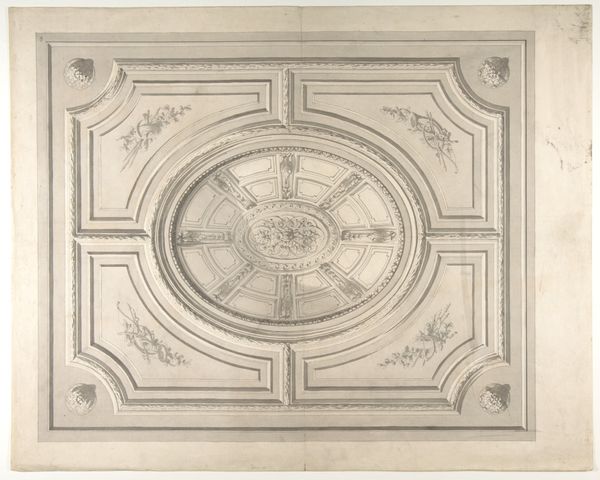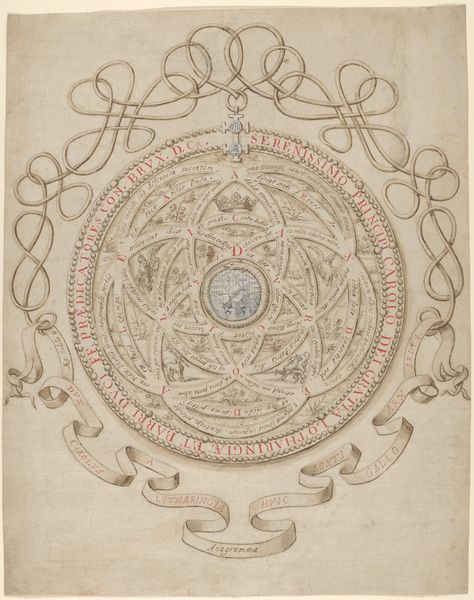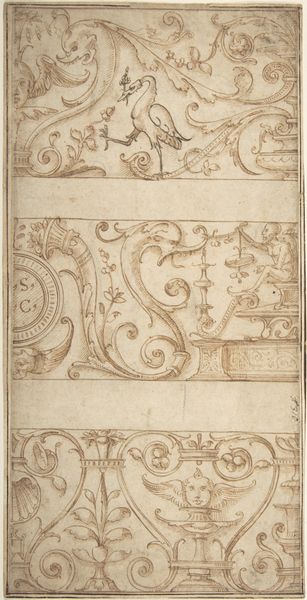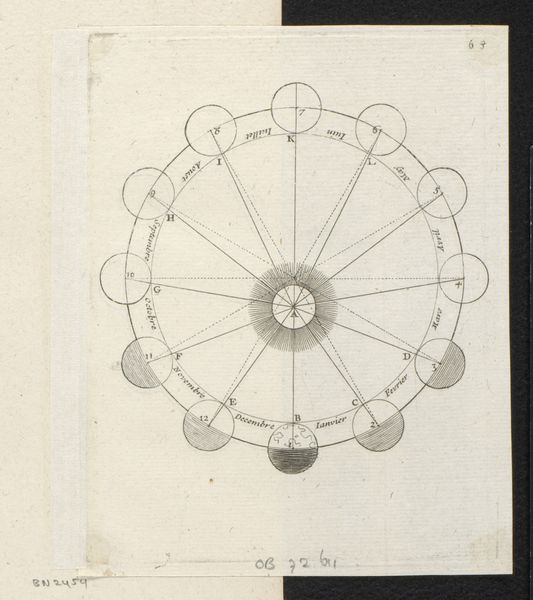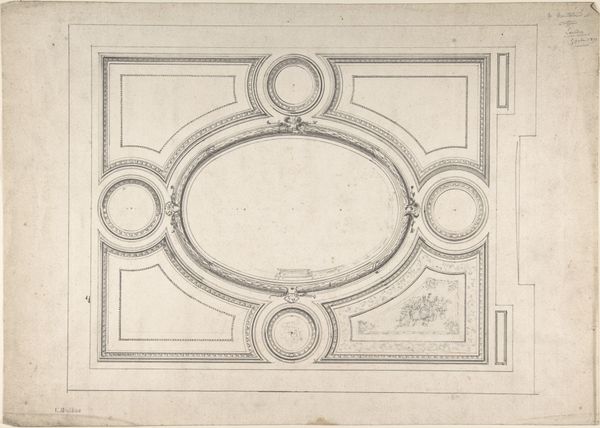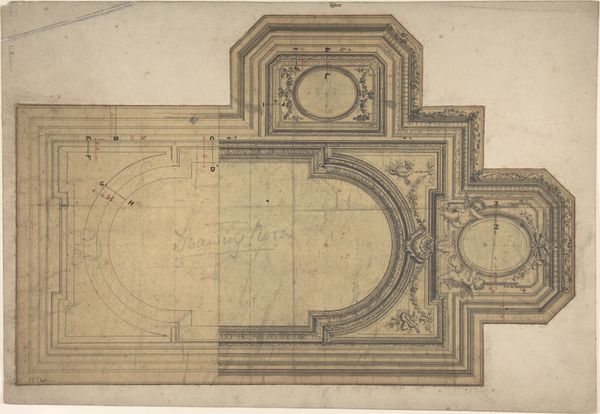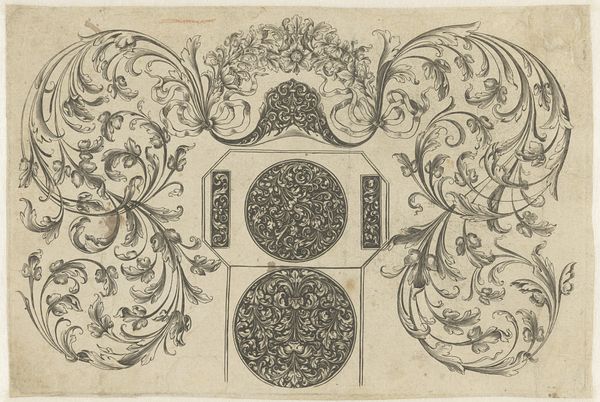
drawing, print, paper
#
drawing
# print
#
paper
#
11_renaissance
#
geometric
Dimensions: sheet: 17 1/8 x 11 in. (43.5 x 27.9 cm)
Copyright: Public Domain
Erasmus Hornick produced this drawing for a platter in pen and black ink in the 16th century. It demonstrates the increasing sophistication of design during the Northern Renaissance. Hornick was a goldsmith and designer, and this drawing gives us insight into the decorative arts of the period. The carefully planned geometric patterns, combined with the central cartouche, show a self-conscious return to classical ideals of order and harmony, that we often associate with Renaissance art. But this interest in classical forms was spurred on by the social and economic conditions of the time. The expansion of trade, new wealth, and the rise of a merchant class created a demand for luxury goods, which in turn drove innovation in design and craftsmanship. Goldsmiths like Hornick were at the forefront of this movement, producing elaborate pieces for wealthy patrons. We can learn more about this historical moment by studying design pattern books. These resources reveal the circulation of design motifs and the networks of patronage that shaped artistic production. This platter design shows the intersection of art, commerce, and social status during the Renaissance.
Comments
No comments
Be the first to comment and join the conversation on the ultimate creative platform.
